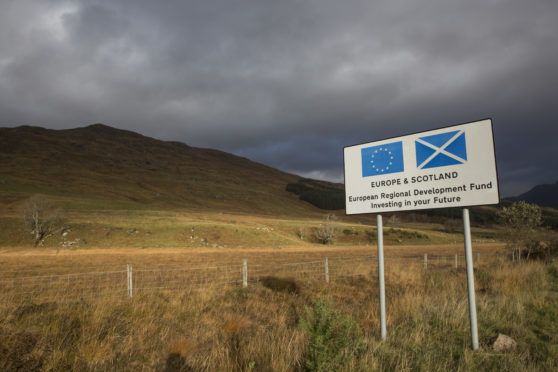What will happen if the United Kingdom government opts – as now seems probable – for a ‘no deal’ departure from the European Union on 31 October?
An overwhelming majority of economic forecasters, including most of those working in Whitehall, reckon that the likely outcome of any such policy choice ranges from bad to catastrophic.
Our newly-installed prime minister, Boris Johnson, takes an opposing view. Negative assessments of Brexit’s results, he contends, are the work of ‘doomsters’ and ‘gloomsters’. To quit the EU, Mr Johnson insists, will be to embark on a thrilling journey to ‘a new golden age’.
The future being by definition less than perfectly predictable, it’s impossible to be certain as to who’ll prove right – the prime minister or the ‘doubters’ whom he’s rubbished in a plethora of characteristically colourful phrases.
What’s more definite, from a north of Scotland perspective, is that to leave the EU with none of the transitional arrangements Mr Johnson’s predecessor, Theresa May, failed to get agreed will at once deprive our area of what’s been an enormously valuable source of funding.
One of the EU’s core priorities, from its 1950s beginnings, has been to reduce regional inequalities across member states. In recent years, the EU has looked to do this mainly by means of what are called European Structural and Investment Funds (ESIF).
While the EU could have done itself a favour by giving catchier titles to its programmes, spending under this and some associated headings has delivered a whole series of benefits to Scotland in general and to more disadvantaged parts of Scotland – not least the Highlands and Islands – in particular.
Since the 1980s hundreds of millions of pounds have gone into bridges, inter-island causeways and all sorts of other transport infrastructure. There has been money – a lot of money – for community ventures, environmental projects and much else.
The University of the Highlands and Islands (UHI), the realisation of a decades-long push to provide people across the north with locally-available access to higher education, is an obvious example of an institution that would not exist in its current form but for the EU cash it has been able to access.
This cash has gone into superbly well-equipped buildings of the kind that have provided Inverness with its glittering new campus and Sabhal Mòr Ostaig in Skye with the teaching and residential facilities that have done so much to inject new life into what was once one of the most depopulated and run-down localities in the Hebrides.
Much the same is true of the rest of the UHI network – colleges from Shetland to Perth and from the Western Isles to Moray having gained enormously from EU investment in IT, research capacity, course development and just about every other aspect of the hugely complex task of creating an entirely new type of university in an area where no university of any kind has previously existed.
So if Mr Johnson’s ‘do or die’ determination to be shot of our EU ties culminates in the UK staging a ‘no deal’ walkout from the union on Halloween, now just 90 days away, what takes the place of the EU funding streams on which not just UHI but so many other Highlands and Islands ventures have been so heavily reliant?
In the short-run, according to the British government, cash from the UK’s own resources will be made available to carry through to completion any part-EU-financed projects that have already qualified for aid from the current ESIF programme that began in 2014 and is in any case due to end in December 2020.
But what comes next is much more problematic. European Structural and Investment Funds, it was announced some time back, will be replaced in 2021 by a UK Shared Prosperity Fund (UKSPF) which ‘will tackle inequalities between communities’ and which will be the product of ‘engagement’ with ‘devolved administrations in Scotland, Wales and Northern Ireland’.
So far, however, precious little flesh has been put on these bones. The UKSPF’s objectives and priorities have still to be agreed. So has the total amount of cash at its disposal, how that cash is to be divvied up across the country and who exactly is to administer the new fund.
That last point alone has the potential to generate all kinds of heat because Scotland’s share of EU Structural and Investment Funds is under the jurisdiction of the Scottish government – while it’s perfectly possible that the UKSPF, when or if it takes shape, will be operated entirely from London.
Perhaps all this will be sorted out to the advantage of areas like the north of Scotland. Perhaps the Highlands and Islands, when the prime minister’s golden age dawns, will qualify for largesse of the sort that’s seen £18 billion invested in London’s Crossrail and another £80 billion earmarked for England’s planned high speed rail network.
Or perhaps not. Ever since the golden age concept was first floated by the long-ago Greek writers Mr Johnson so admires, golden ages have been a whole lot easier to talk about than to bring into existence.
Jim Hunter is a historian, award-winning author and Emeritus Professor of History at the University of the Highlands and Islands

